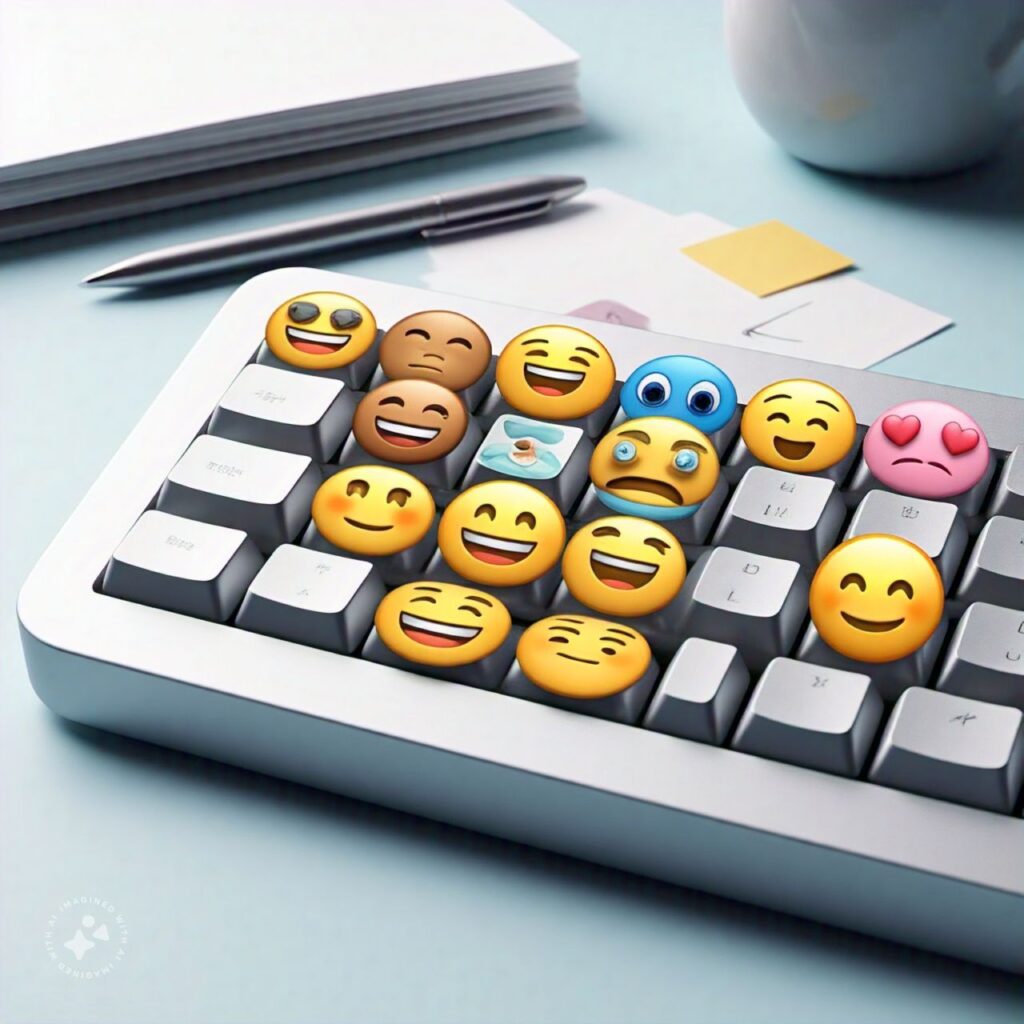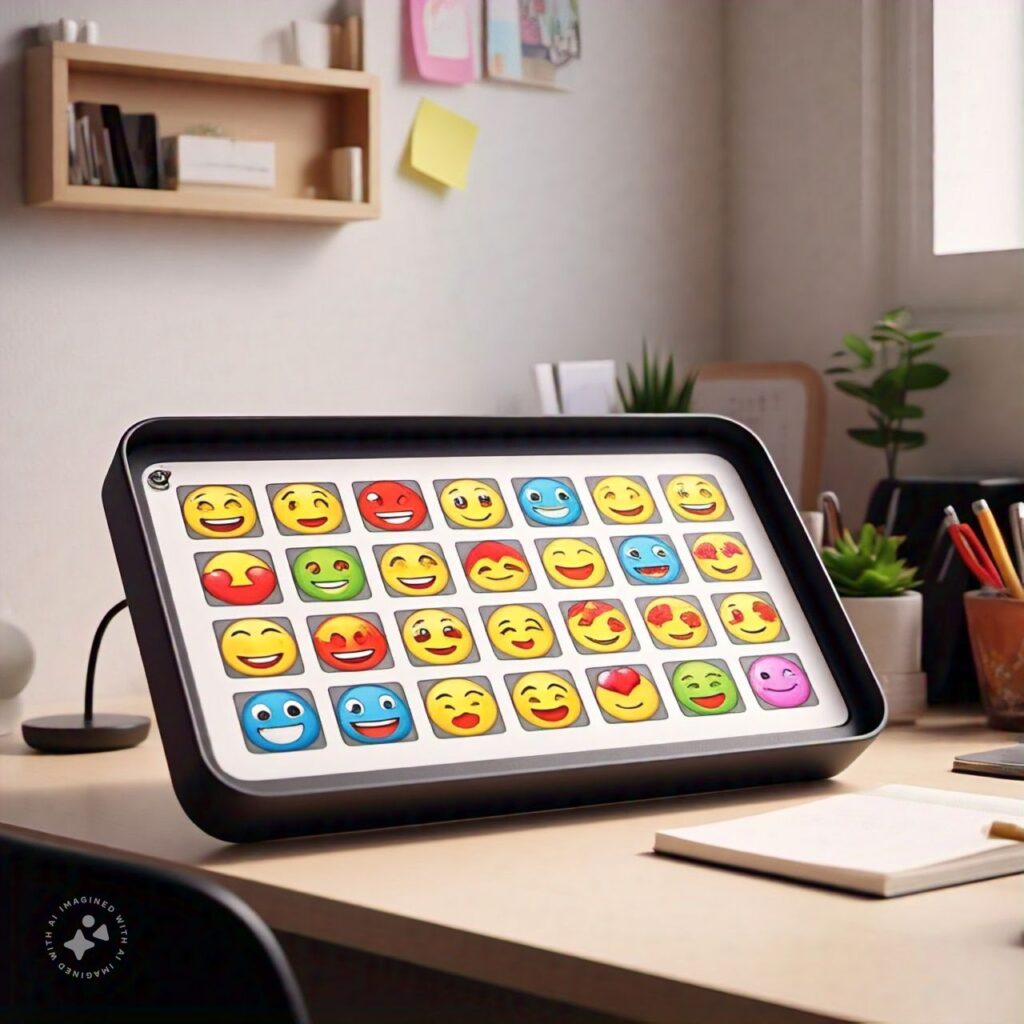Discover the surprising link between emoji usage and emotional intelligence! 🤔 This insightful guide reveals how the way we use emojis can reflect our emotional intelligence, empathy, and connection skills. Learn how to decode the emotional cues behind emojis and improve your relationships, communication, and emotional intelligence.
Emojis have developed beyond being amusing icons to becoming an integral component of interacting over the virtual space where face-to-face interaction is impossible as a result of drastically changing trends in how people communicate with one another.
Emojis are now vital components of online interactions as they have a specific role of replacing verbal cues missing in real-life contact. This investigation not only highlights the importance of those symbols but also attempts to consider how gender differences and different personality characteristics affect emoji use, implicating the complex emotional structure of online communication.
The Importance That Emojis Bring To Communication Over Digital Channels
Emojis have become another form of a universal language where words cannot describe a meaning. These satisfy the requirement of absent body language in an online environment in the sense that they help to perceive the meaning of a message better. For instance, the presence of a smiley face can quickly reassure that there is no malice on the other side; there is simple amicability, and a thumbs up can say “I value that” thus lessening the ambiguity around the discussion.

In a society where text has often led to miscommunication, emojis provide a solution to such matters. They could assist users in adding tone and humour to the messages or even warmth making virtual interaction feel more real.
The research included 320 participants of different backgrounds focusing on their messaging styles and the use of emojis. It was discovered that those who frequently and confidently used emojis belonged to the group of people with high emotional intelligence and therefore, had the ability to empathize with others.
Gender Differences in Emoji Usage
Emojis have been in vogue for well over a decade, and they are used around the world, including Africa. One of the study’s astonishing insights emerges from emoji usage across the sexes divide. In fact, such a divergence does not come as a surprise as such trends have also been documented elsewhere. Social integration and incorporation of this modern language happens earlier for women than men, such that great recognition and positive embracement of technology is documented among the former to explain the interface. For the women, this seamless use of emojis in both the public and private spheres correlates with their communication style which more often than not is precise and emotionally forward.
Contrary to this, male emojis show a desire for a much wider usage of emoji types. This range suggests an interdisciplinary approach to portray emotions but only, but never universally, within the boundaries of a single context or even a conversation. These include societal and cultural factors which reinforce how and how much emotion is expressed or even displayed within the interactions of the digitised world.
Emotional Characteristics and Attachments to Emojis’ markers
Beyond gender, which is not even a binary system as scholars have pointed out, emotional traits also matter in the formation of emoji habits. Avoidant ones, particularly in children, are more common with caretakers’ failure to express emotions consistently. Embarrassed individuals prefer text alone and have no intention of sentiment transmission, and so don’t send emotions during online communication.
There are people who prefer not to be ‘usable’, thus skipping close emotion and being comfortable together. In such cases, lack of emojis fits this purpose best.
Becoming transformed, as far as their role of communication is concerned, smiling emoticons are rather actively used, as they are employed for making connections with others and articulating feelings. This group possesses a more distinctive character, and it demonstrates that in the digital conversation the use of emoticons serves to improve the emotions involved in the dialogue.

Emotional Finesse With Emojis
Thus, the authors of the work emphasize the precision that emojis provide to electronic communications. Depending on the context, skin tone and eye colour, a single emoji can bear so many implications that words by themselves would not be enough to describe. A simple saw or a statue will sound harsh without an added heart or laughing emoji, for example. Moreover, adding a laughing emoji can lighten up a blunt statement.
Such laughing faces, heart signs, and ‘thumbs up’ emoticons are very widely used since they are, always, provided with the highest number of daily digital messages sent and, their general explosion suppress a common ground for emotional meaning.
Extended Range of Results of Emoji In Usage
In addition, it not only considers an understanding of the emotional sentiment of an individual behind the use of emoticons but has potential usage for the general population, organisations, and even software developers. For individuals, understanding their emoji habits provides insight on their emotions and how they react in social situations, thus expanding their self-perception.
The research has the potential to awaken purposeful technological communication methods and tools that could be more user-friendly and universal. Through the implementation of sophisticated emoji options or text prediction schemes, the developers will be able to contribute more realism to the online exchanges, thus enabling distant contact to be as close as possible to real-life interaction.
Conclusion
The study buttresses that it is emotions that decide the effectiveness of the communication and that the important parts are emojis that help to eliminate the emotional barriers that occur in distant communication. Emojis are much more than mere graphic symbols that embellish written text. In virtual reality, they become effective means of emotions’ art, intent clarification, and of more profound relations’ set. The demand for digital communication implies the need to manage and comprehend the role of emojis in facilitating and augmenting interaction with more concern and sensitivity, which will add value to social and business interactions.
This also means we are getting closer to a world where digital conversations are more representative of how we speak to one another in real life by relying on the details of how emojis are used and enabling technology to help us connect instead of making it more difficult to do so.
Note: Ai Generated Images

